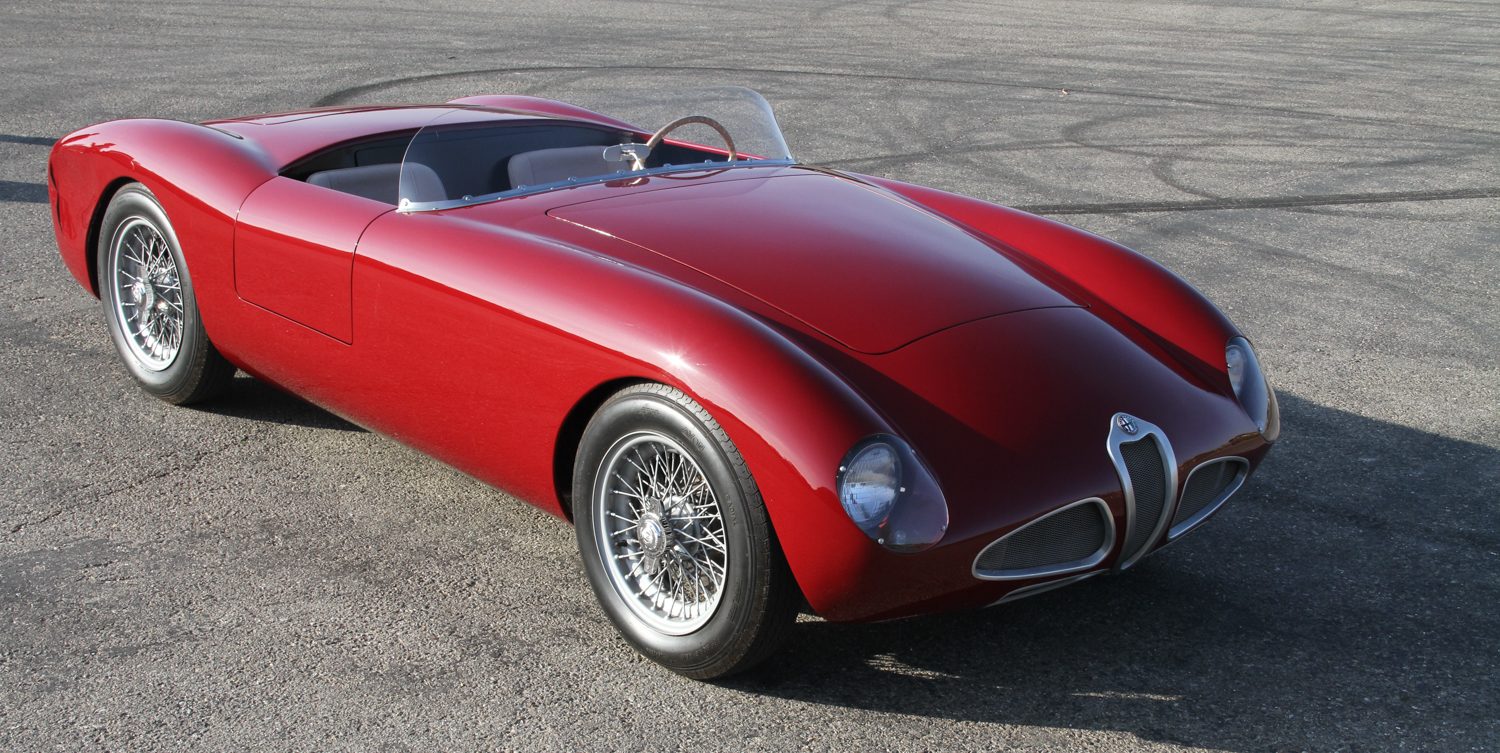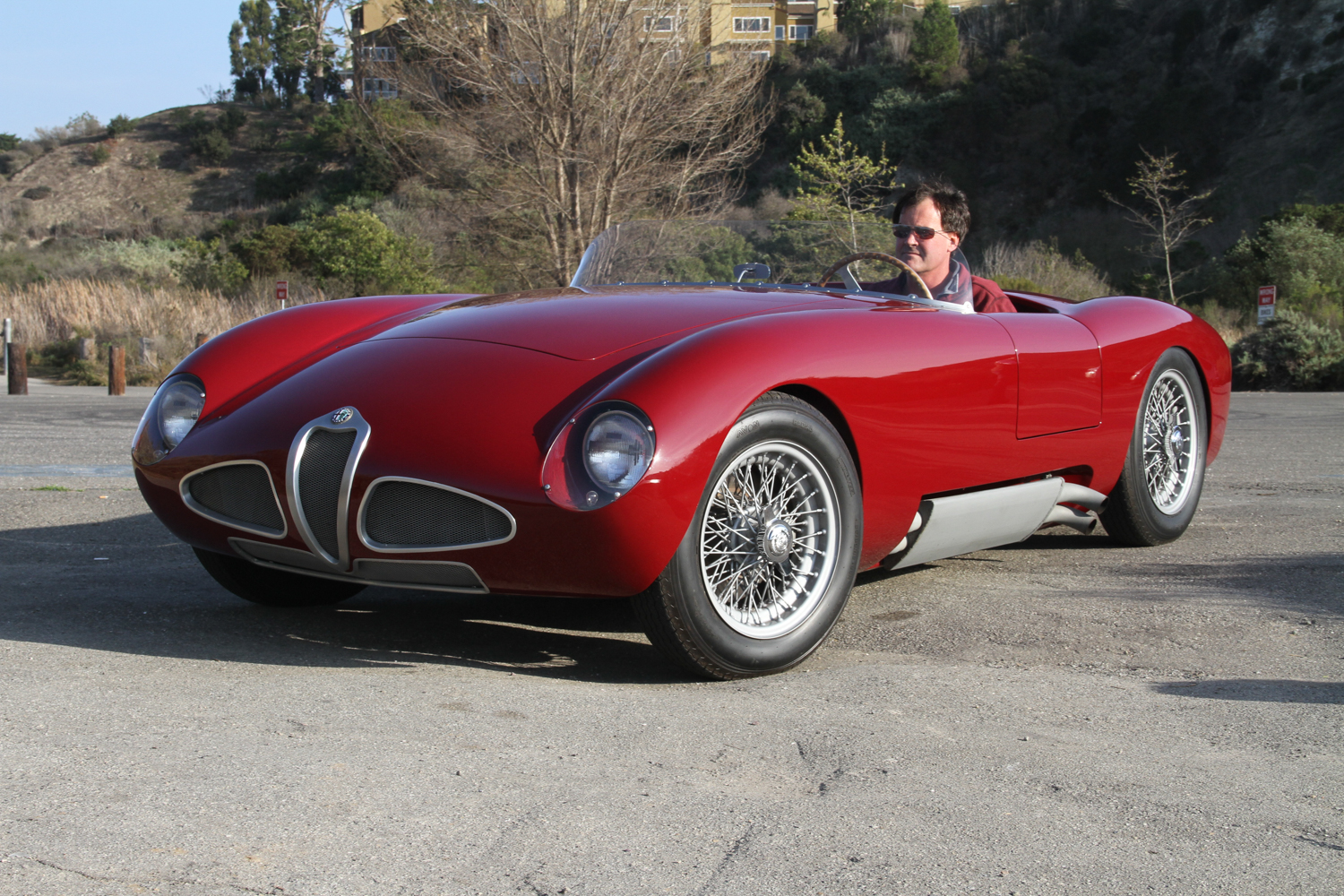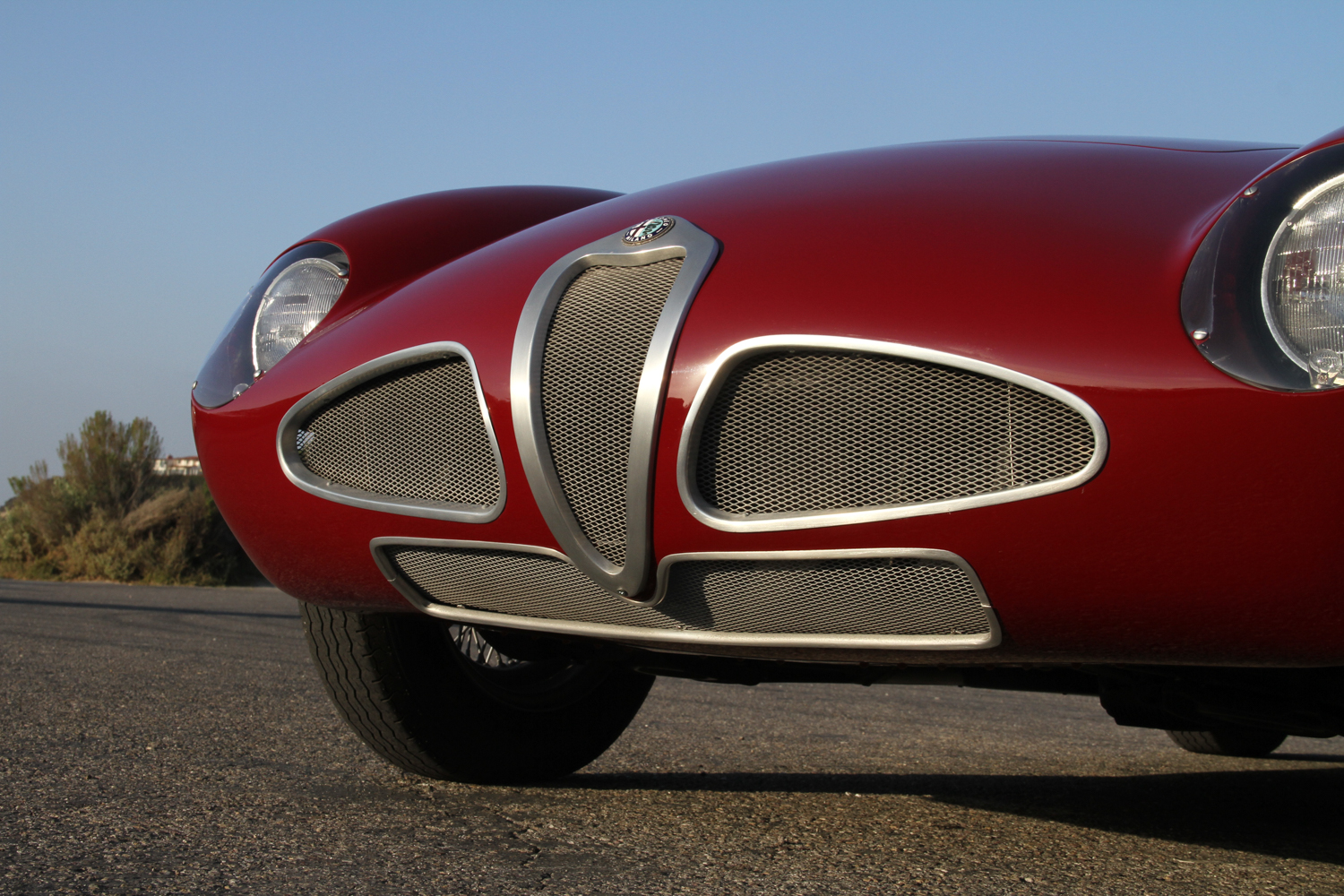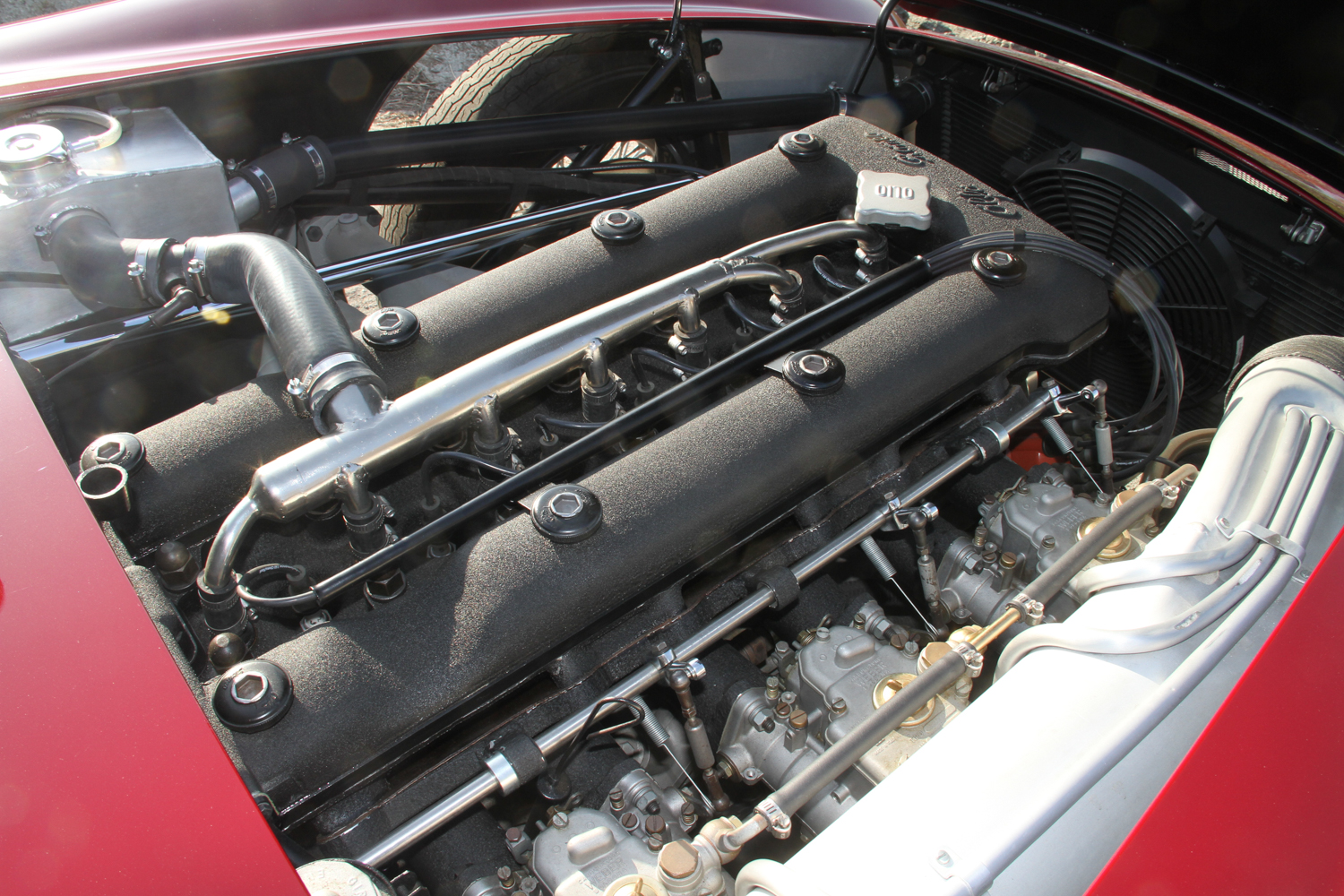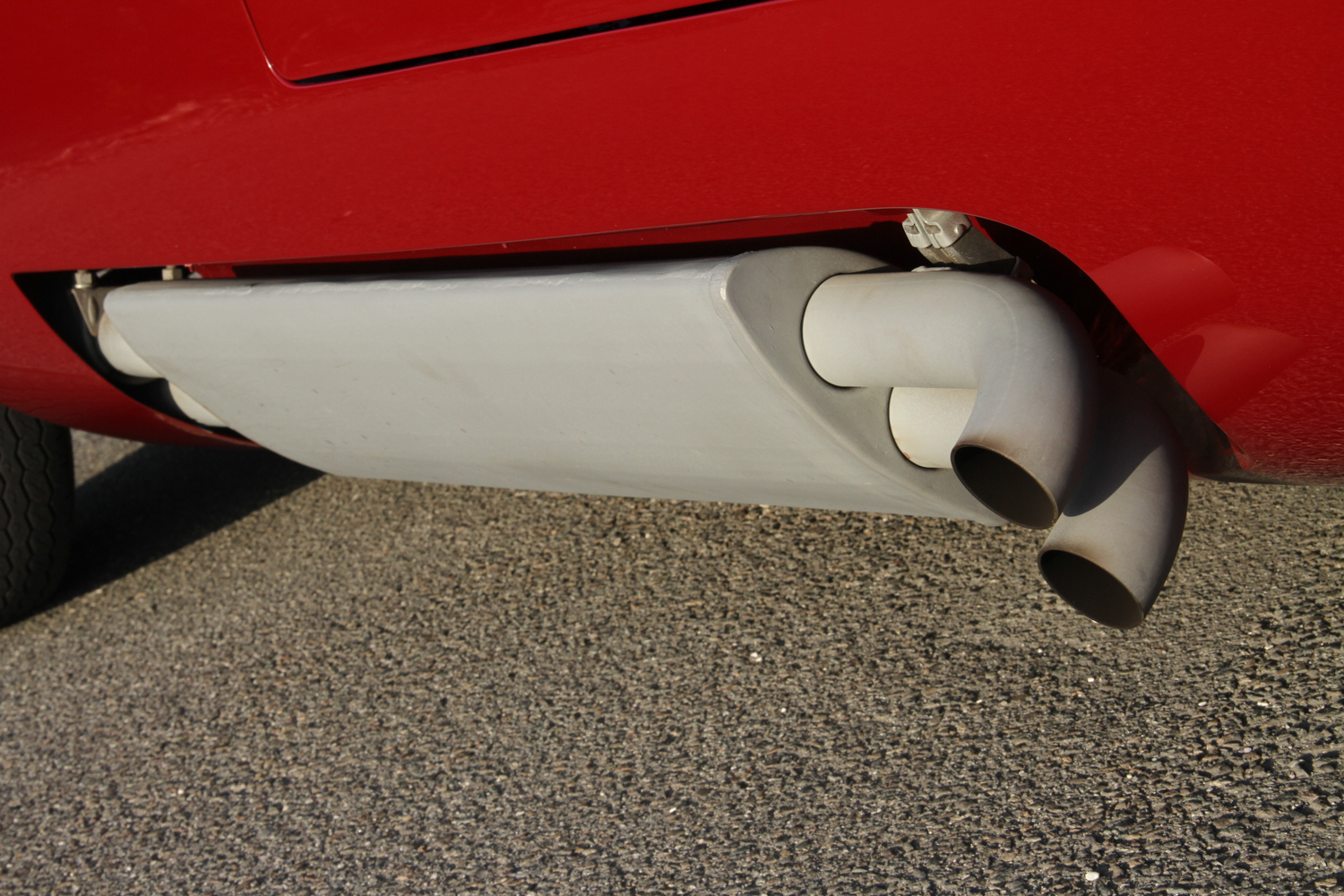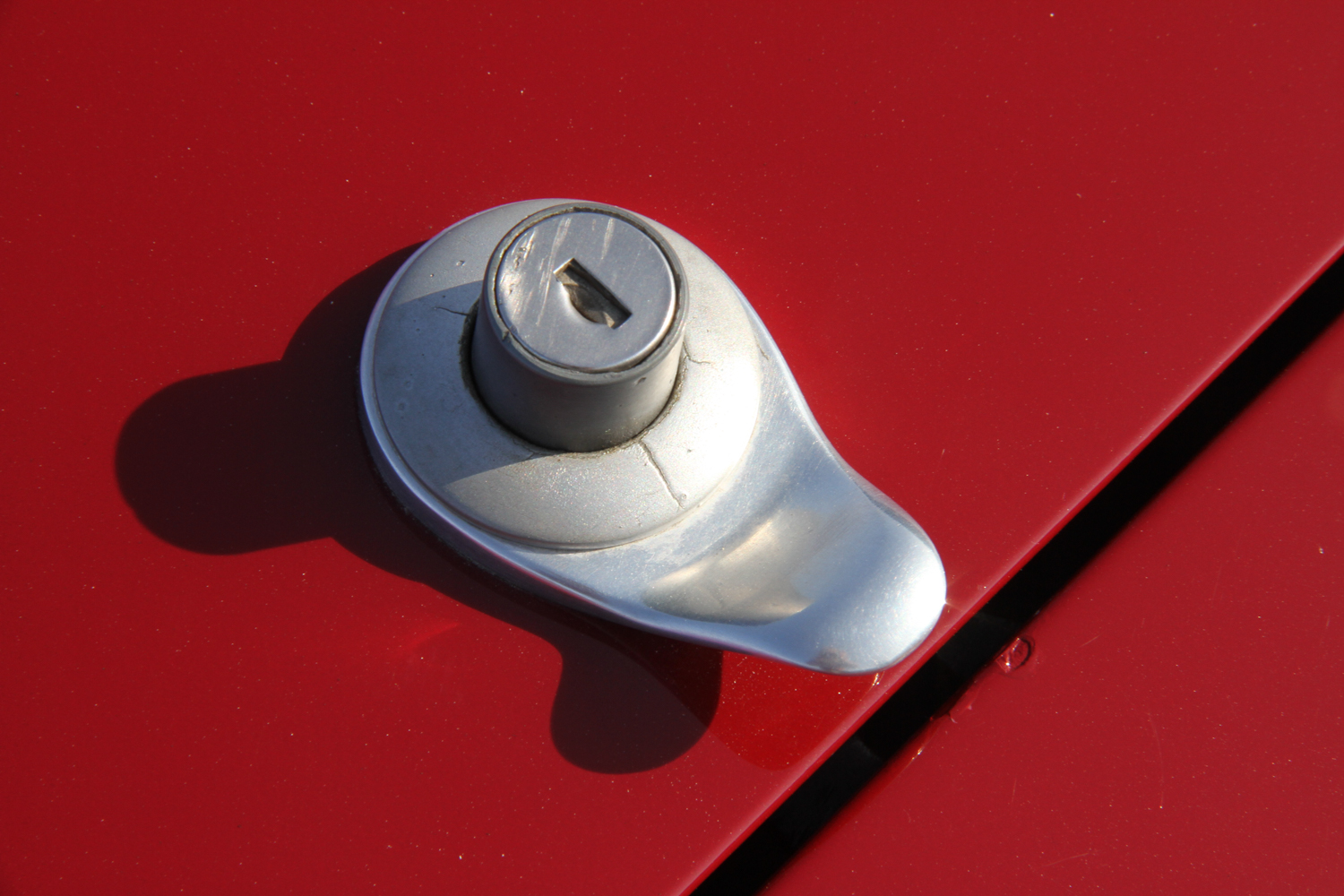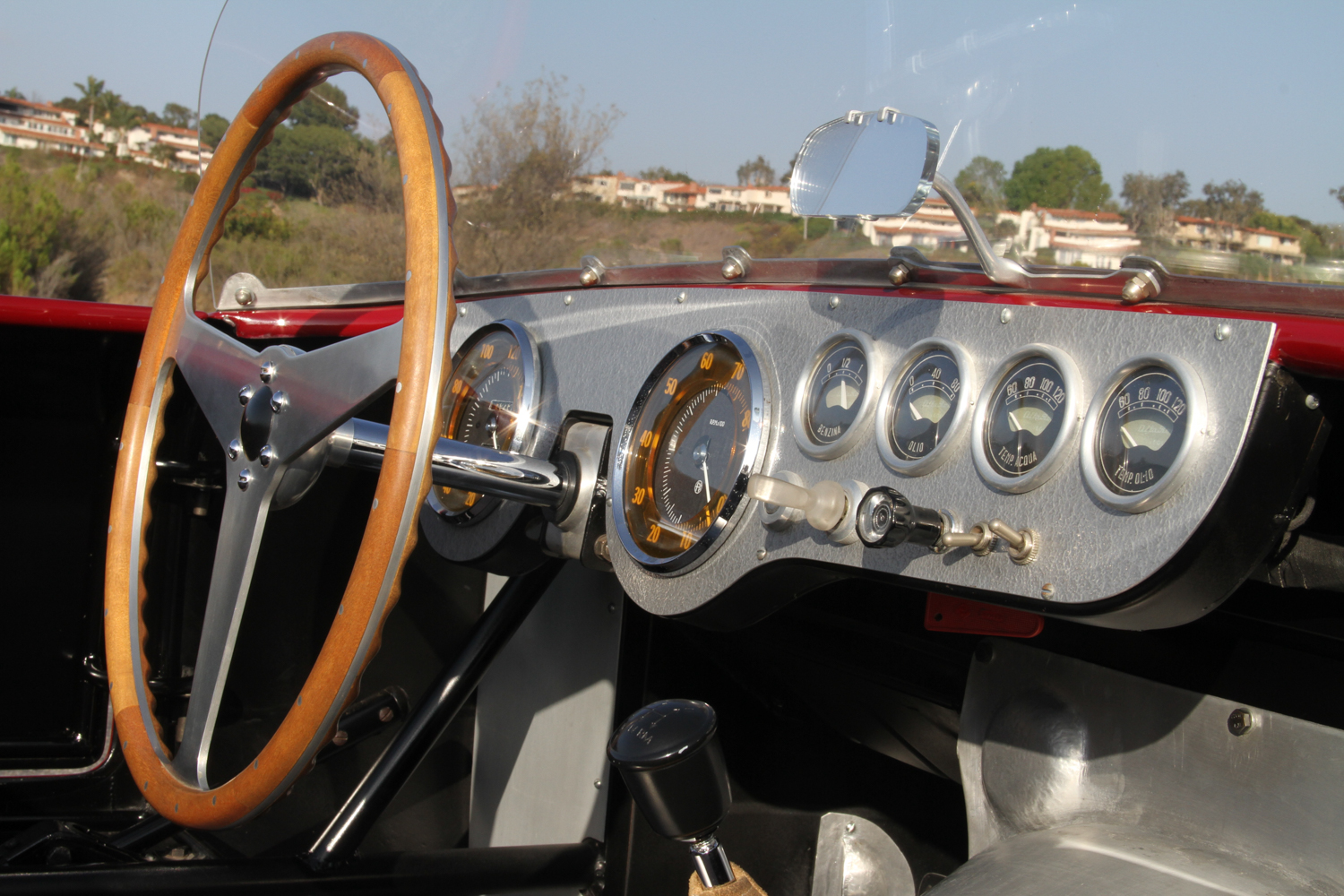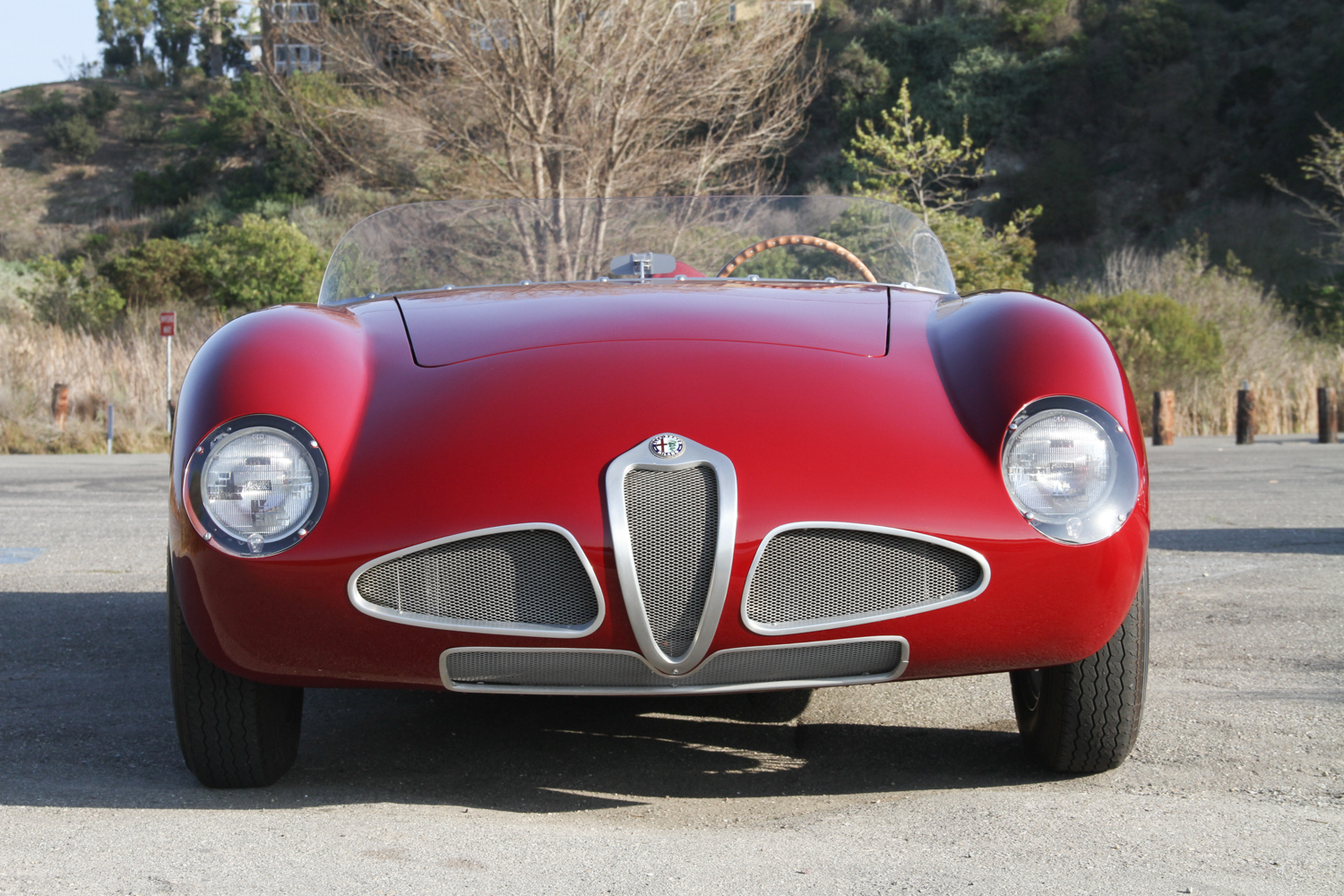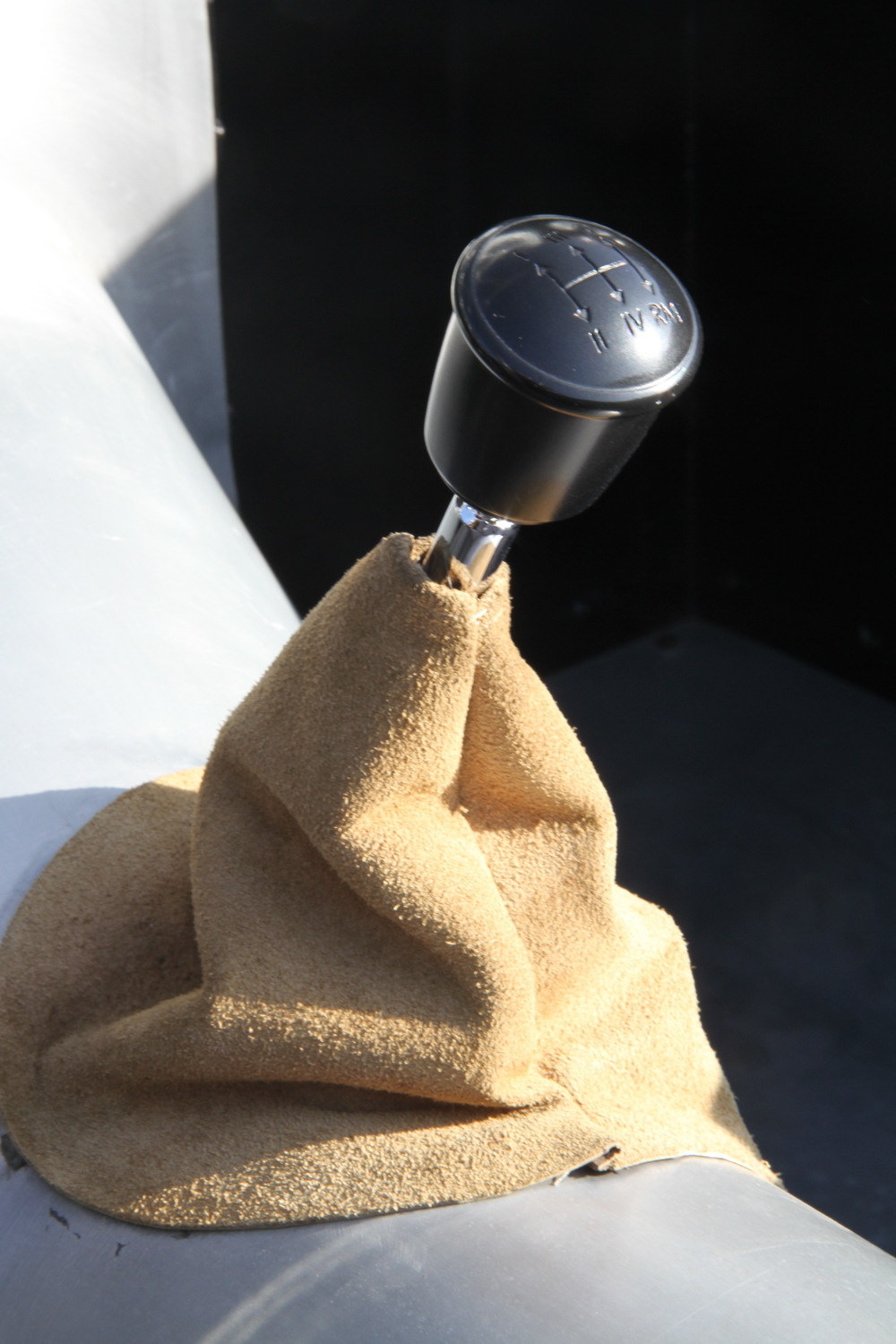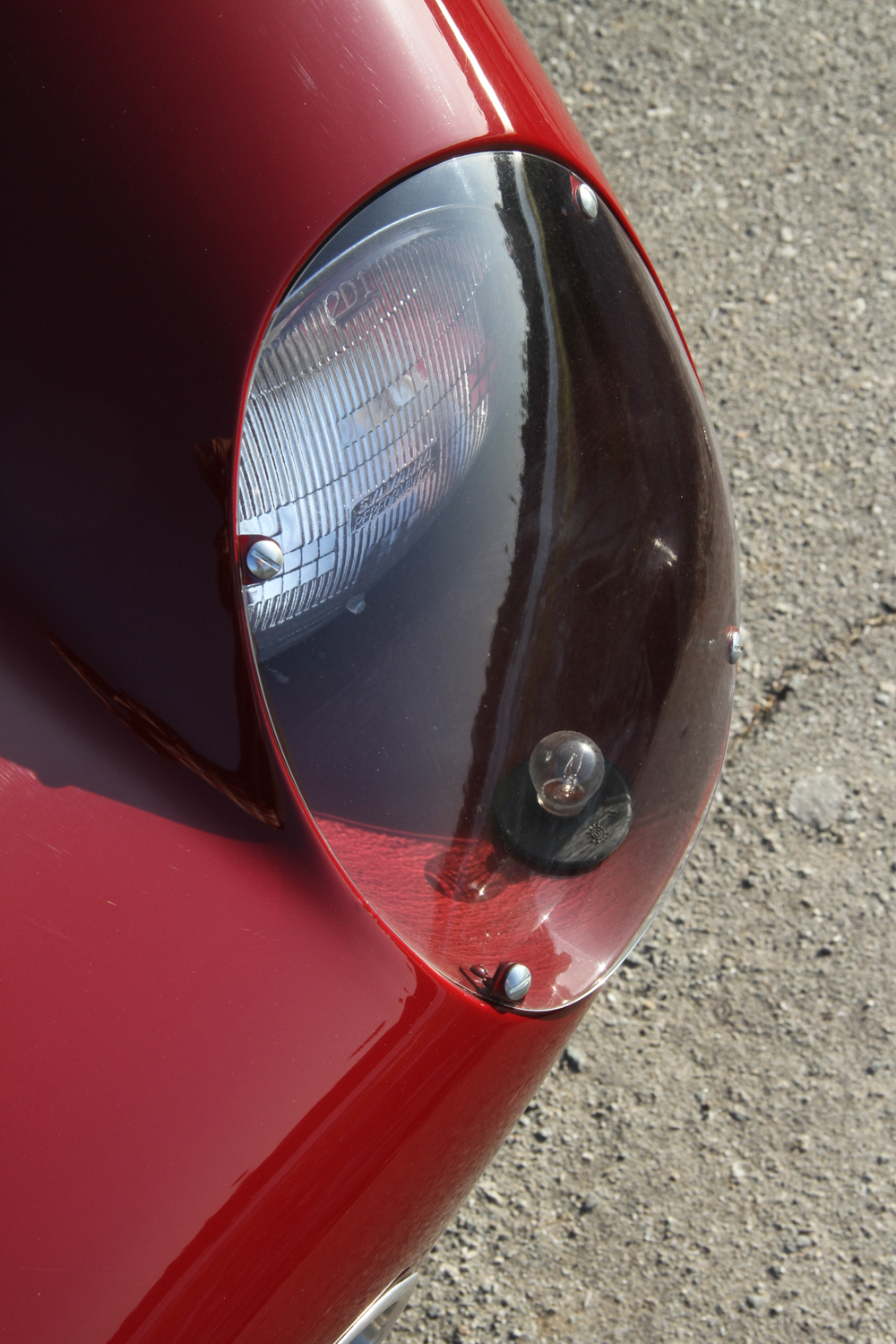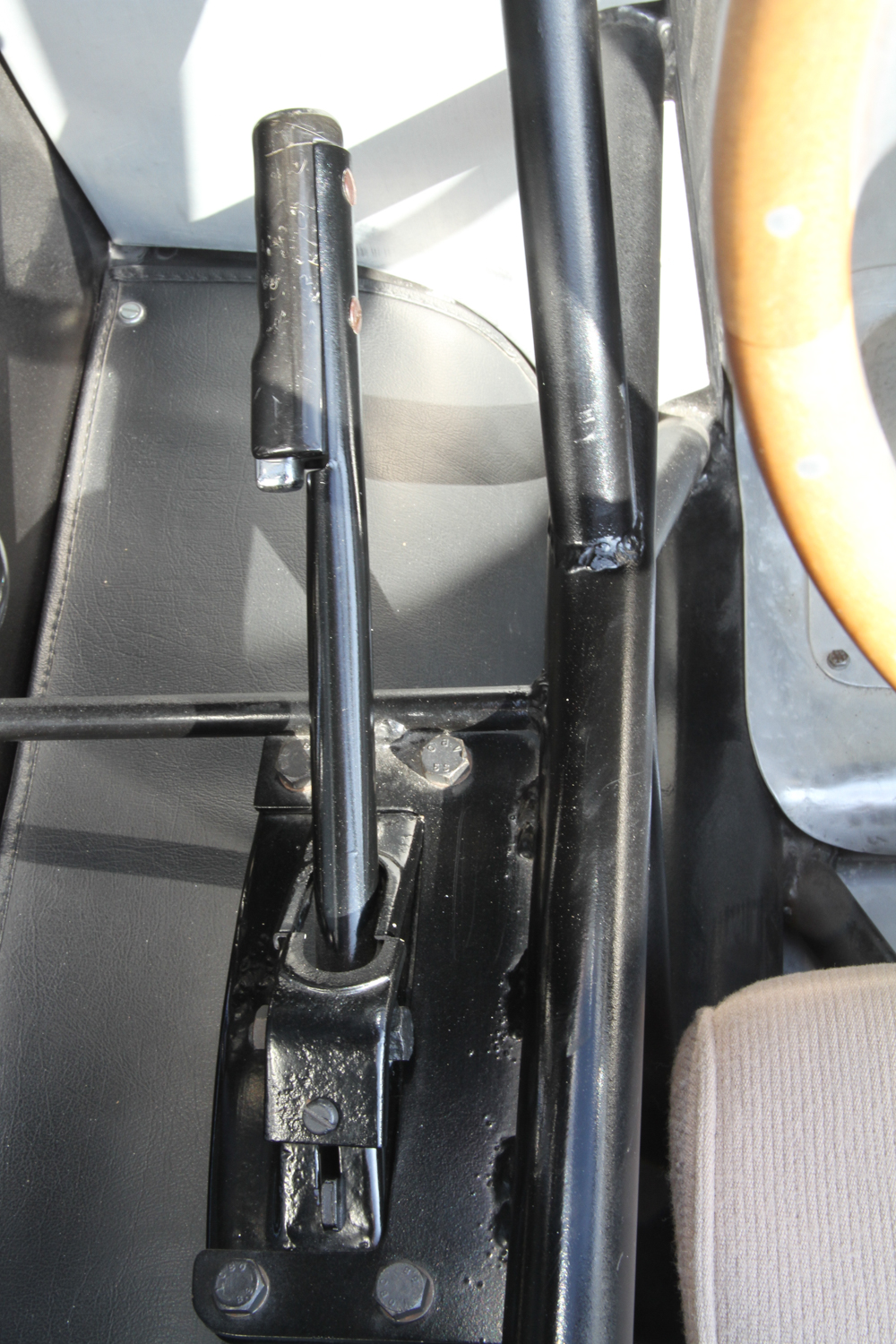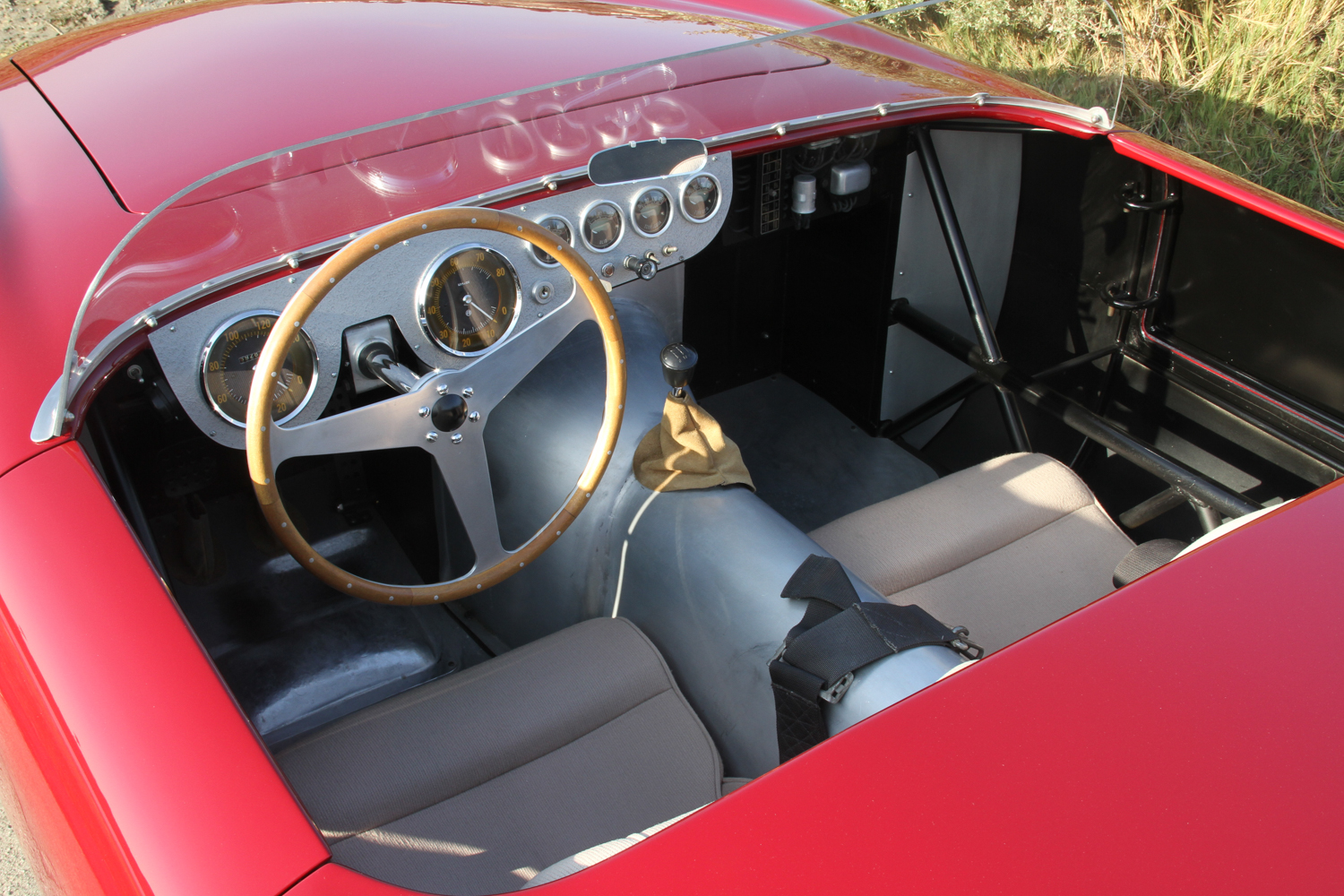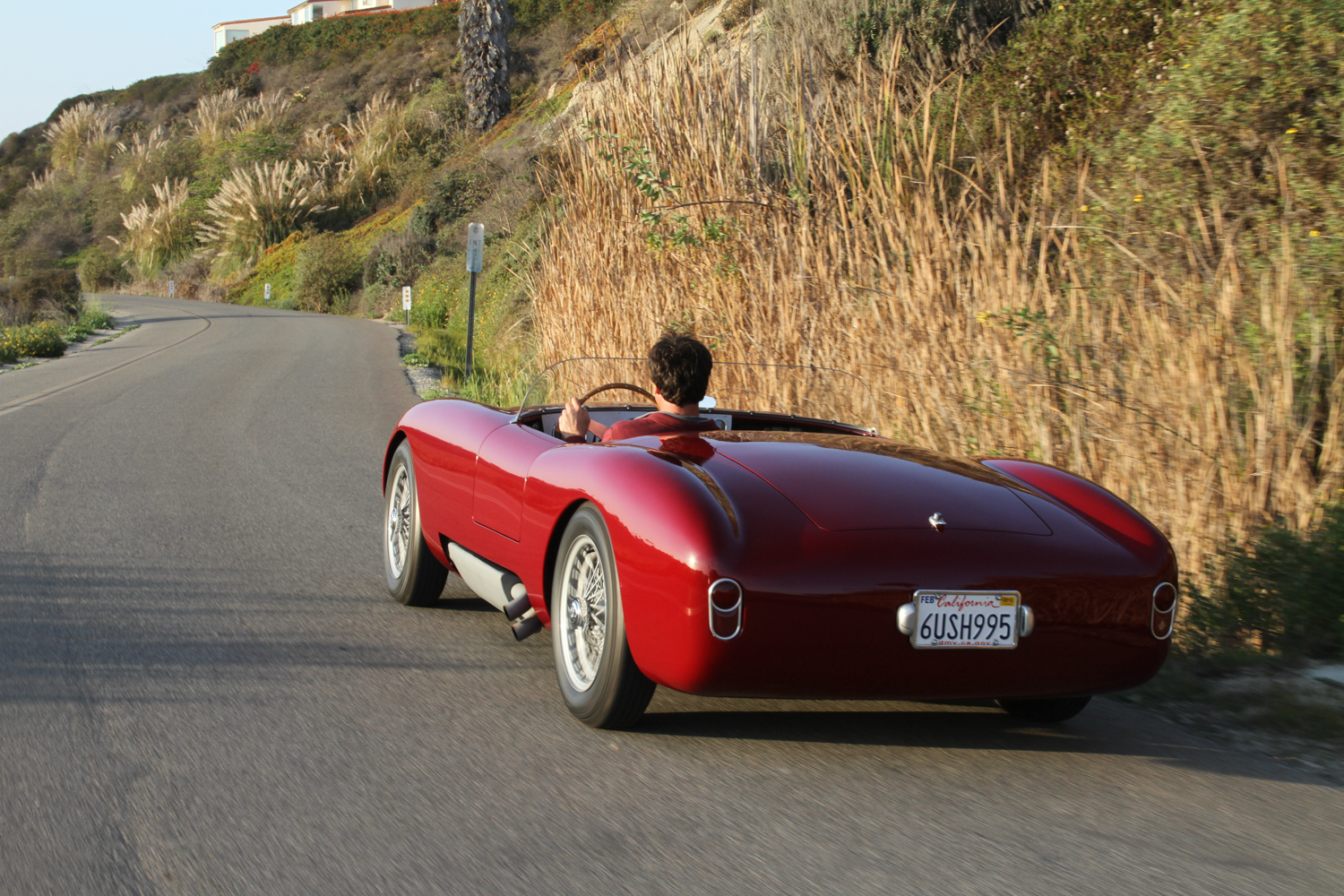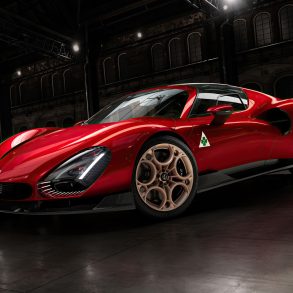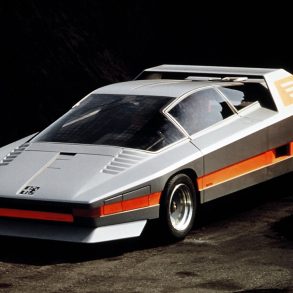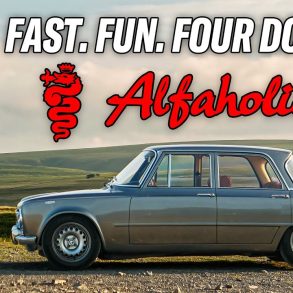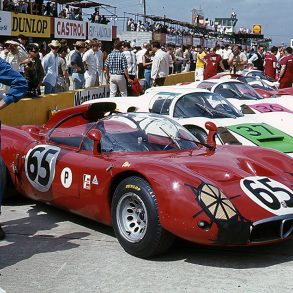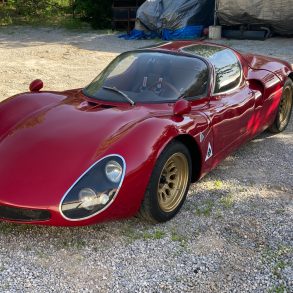
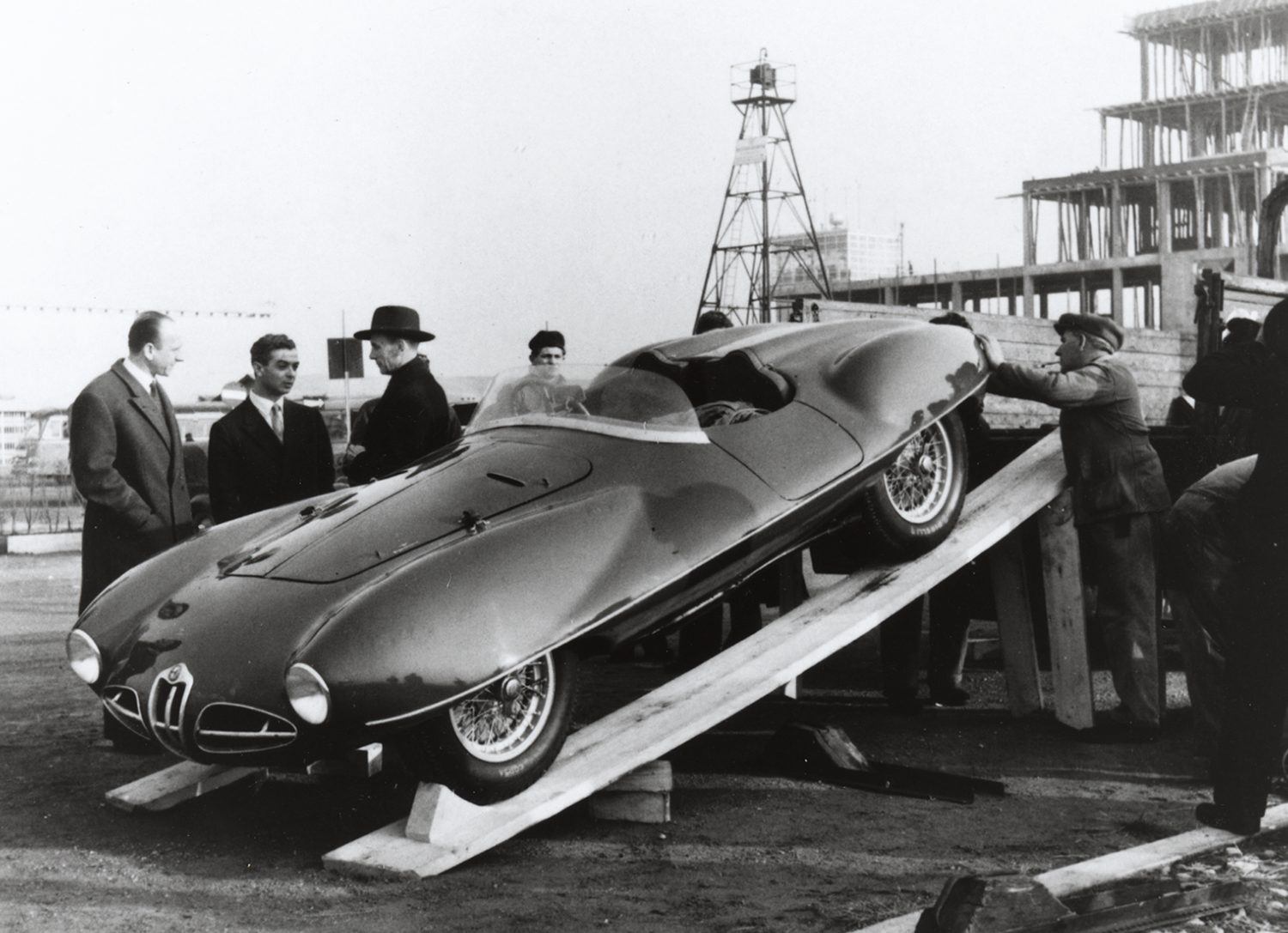
Alex had long admired Ferrari and Maserati, but a V-12 Ferrari engine was rare and the price point was formidable, not to mention that separating one from its parent car seemed a historical violation. He considered the Maserati 6-cylinder engine, but it was too heavy (the crankshaft alone is almost 100-lbs), equally rare, and almost as expensive, so the relatively plentiful yet exotic Alfa Romeo 2600 engine was a suitable choice. In keeping with the engine selection, the Sports Racer should be Alfa Romeo in concept. Alex liked the Carrozzeria Colli designed 6C 3000M, but had reservations about building a replica; his SZ replica in progress at the rear of his shop was an ongoing project that demonstrated the difficulty in accurately reproducing any model. A car that incorporated his ideas was the goal. And after spending 30-plus years restoring Siatas, Fiat 8Vs, Alfa Romeos, Ferraris, Lamborghinis and Maseratis, it seemed that designing and building your own car was just an extension of what he’d been doing all along. The heartbreak of his chosen career—the heartbreak of anyone in the vintage automobile restoration business—is that after pouring thousands of hours into a project, a restorer’s final experience culminates watching the car disappear into a delivery trailer. Alex wanted a car that, after all those hours, he could own himself. He wanted the challenge of manifesting a personal interpretation of the ’50s sports racers, and the only way forward was to build one. After restoring and driving a Maserati A6 GCS, he knew how the car should drive. He had an idea what it should look like, as well. In many ways, that Maserati served as inspiration. But he didn’t want a racecar; his dream was to drive his car in rallies, to and from shows, or any time or place he chose. He knew that he wanted an open car, and he trusted that his design instinct would deliver an aesthetically pleasing integration of line and proportion. What he needed was some way to begin.
Then, in ’06, fate intervened with the opportunity to turn his idea into reality and he embarked on the design and construction of his sports racer. Not a 21st century reproduction or brutish knock-off featuring modern day power train with electronic engine management, low profile tires and anti-lock brakes, but a car rooted in the past and constructed in the present, as if time had stood still and the drivetrain, wheels and brake choices you had then were the choices you have now. It would be coachbuilt in the era appropriate, superleggera fashion, the frame fashioned from steel, the aluminum body gas welded, old school. But it takes more than three decades of automobile experience to coachbuild a car. It takes a vision, a very specific design aesthetic, and the broad knowledge of all that has come before. And that’s just the design. The rest takes 4000 hours and almost three years of singular focus. What you have when finished could be argued as the truest historical representation of a car that might have been. What you have is an Alfa Romeo Sports Racer.
The Build
The fateful day arrived when a gutted, rusted out donor car was off-loaded at his shop; an Alfa Romeo 2600 rolling chassis complete with engine and transmission. That solved the need for a drivetrain, as well as front cross member, rear axle, steering box, and oil cooler. All the period correct running gear was present but what was needed was a suitable chassis. Which chassis was the question.
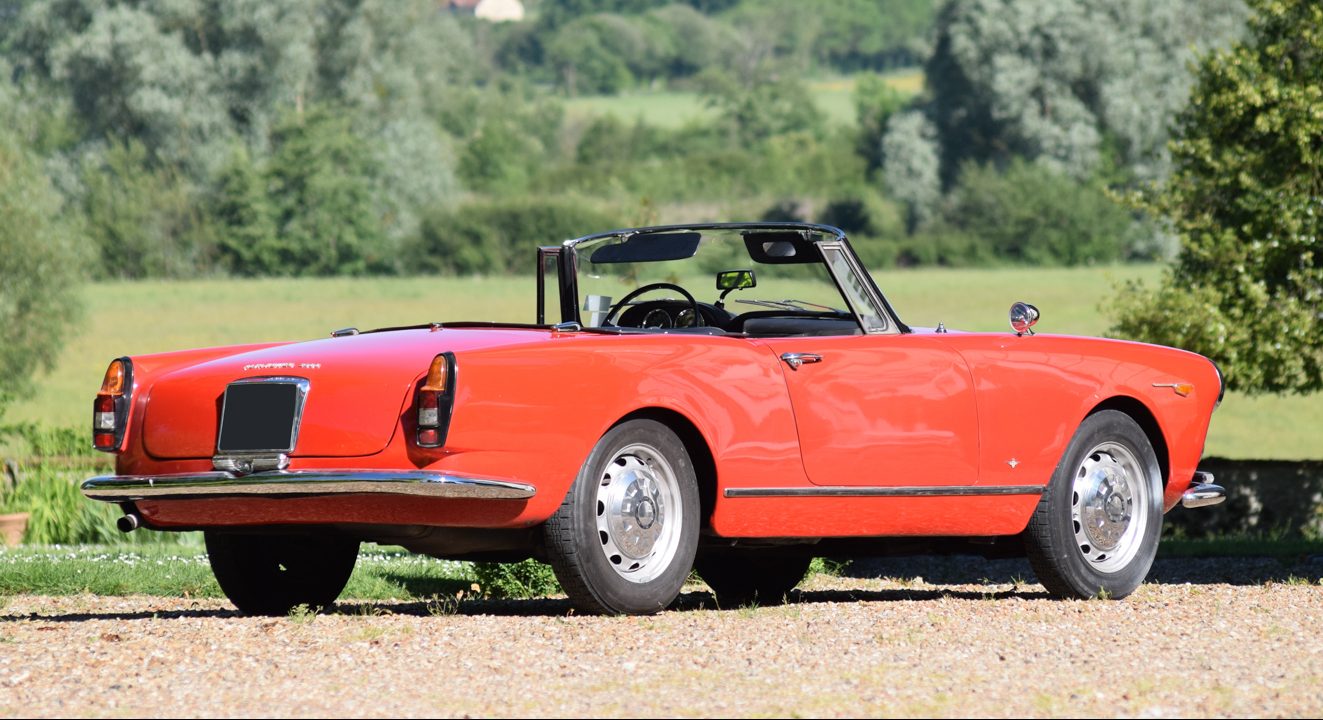
The purpose of a racing and sports car chassis has been best described as a method of locating all the various mounting brackets for a car by means of a complete structure. The goal of that complete structure is stiffness and torsional rigidity, meaning, no flexing, twisting or bending. Solutions as complicated as the famous multi-tube, “Birdcage” Maserati Type 61 chassis, and the elaborate spaceframe Mercedes Benz 300 SLR chassis are well-known success stories. The 1958 Lister-Jaguar achieved those goals using a ladder-type chassis design. For Alex Bacon’s sports racer, given that the original front cross member and rear axle would be used, this type of chassis design seemed logical.
With that decision made, what followed was construction of a twin tube, ladder-type chassis of 3″ diameter round tube sections with diagonal bracing. The chassis was laid up on a granite bench to keep all pieces true to squareness, level and plumb. The 92″ wheelbase was based on the Alfa Romeo 6C3000CM and, since the stock Alfa Romeo 2600 front cross member and rear axle were used, track at front and rear match that of the donor car. The 6-cylinder engine and 5-speed gearbox sourced from the donor car were moved 19 inches rearward for ideal weight distribution. The engine and gearbox were lowered onto the frame and situated with wooden blocks so that 2″ diameter round tube sections could be fit longitudinally around the sump and laterally beneath the transmission. Motor mount brackets were fabricated and the steering column mounted to ensure sufficient clearance at the exhaust manifold. An additional rear transmission mount was designed to provide rock steady attachment. Rubber, rather than solid motor and transmission mounts, were selected to dampen vibration pulses feeding through the chassis to the cockpit.
The firewall bulkhead was constructed and installed, and the position of dashboard, door pillars and pedal box determined. Additional 1.25″ round tube sections were fit and cross-braced beneath the seats and along each outboard side to enclose the cockpit. The rear bulkhead was located behind the seats and behind the rear bulkhead, a lateral, perforated spar was welded between parallel, 3″ diameter round tube sections that angled upward from the lateral rear chassis tube section to the upper spring pans. Outboard, 2″ diameter round tube sections from the twin tube chassis join at the upper spring pans, and longitudinal 1.25″ diameter round tube sections were installed adjacent the spring pans to absorb suspension loads and control chassis flex. Since a live rear axle was used, fore and aft location depended on the lower radius arms, and lateral axle location on the upper trunnion. The lower radius arms were equipped with Heim joints. The stock, rubber trunnion bushings were replaced with custom machined, urethane bushings. The original 2600 driveshaft was shortened and modified with a more robust U-joint to eliminate the problematic, flexible rubber coupling. With the planned engine tuning and increased horsepower, the inevitable failure of the flexible rubber coupling within close proximity to the driver’s femur was considered an unacceptable risk.
Now that the complete drivetrain was in place, the original, bolt-on steel wheels were mounted and the chassis was mobile. Ride height calculations were made using wood block shims beneath the frame. The completed vehicle weight was estimated to be less than 1800-lbs, so appropriate rate coil springs, front and rear, were installed. Consideration for side-mount exhaust, fuel tank, battery and radiator required more planning, and an aluminum radiator was purchased so that the supporting framework could be designed.
A fuel tank was made up using hammered and riveted aluminum sections emulating period construction techniques; in a sensible nod to safety considerations, it conceals a safety fuel cell. Dual electric fuel pumps and canister fuel filter were mounted ahead of the fuel tank, just behind the driver’s seat, and accessed through one of two removable panels in the rear bulkhead. The battery was located behind the second removable panel on the passenger side. A muffler was fabricated from steel expanded metal sheet rolled into tubes, surrounded with fiberglass, and sealed within a longitudinal, oval, sheet metal enclosure. The muffler was positioned on the driver’s side rocker panel. Finally, the stock Alfa Romeo 2600 handbrake was fitted outboard of the driver’s seat rather than on the center console.
Next came a classic use of CAD-derived inspiration; CAD, meaning Cardboard Aided Design, in which cardboard templates are cut for front fenders, hood, cowl, doors, rear fenders, and trunk, to quickly simulate the body shape. The cardboard templates were revised multiple times until a satisfactory shape was achieved. Plywood forms fashioned from the cardboard templates were installed to provide references for body panels and the locations for the small diameter tubing to support them. The front-end design comprised complex, compound curves that did not lend themselves to representation in cardboard or plywood, so a solid block of foam was installed. Over many days, the foam was sculpted into the final form. The door frames were built from small diameter tubing, hinges fabricated, and latch mechanisms based on Italian units of the period were designed and constructed. Now, the chassis could be rolled out of the shop into the sun, and the overall shape and proportions appraised. It was beginning to look like a car.
Months of metal work remained, shaping sheet aluminum panels over bucks, using an English wheel, fitting and revising and fitting, again. The front of the body required 16 separate pieces of aluminum and the front fenders 4 pieces each to complete the forward body section. The aft body section required 12 pieces for the rear and 4 pieces for each fender. The rockers were 6 pieces on each side, and for the hood, trunk and each door skin, single, formed sheets of aluminum were used. Just as in sports racers of the period, no provisions for bumper attachment were considered. Now that the chassis had a skin, decisions about fender radius, the location of grille openings, headlight and taillight positioning could be made. Careful study of the Colli bodied Alfa Romeo 6C3000CM provided the design for the taillights, the size and shape of the grille openings, headlight buckets, and rear license plate frame. A great deal of time was spent conceptualizing the execution of each piece, experimenting with proportions and fit, and selection of material. Every piece on the car needed to reflect a cohesive theme, supporting the overall design vision, contributing to the aesthetic of the original concept, and keeping with the period correct interpretation. Nothing about the car could look out of scale, out of place or period incorrect; no detail could corrupt the authenticity desired for the completed project.
Next came fabrication of the transmission tunnel, dashboard, trunk floor, fender wells, foot wells, and engine bay sheet metal, all formed from aluminum and, like the body, gas welded. At the end of two years, the basics were complete and the body could be removed section by section, and the chassis disassembled and prepped for painting. The chassis was painted matte black and the engine was rebuilt, with performance upgrades including built up and profiled camshafts with higher lift, Toyota valves and dual valve springs, custom valve guides, high compression pistons, ported and polished head, and triple Weber carburetors.
An exhaust header was fabricated and the head flange match-mated to the exhaust ports. The transmission was disassembled and inspected, worn parts replaced, and the top of the transmission tailpiece was cut off and a machined plate welded in place. The rearward location of engine and transmission necessitated fabricating complex, shifting linkage using an Alfa Romeo 105 series selector finger and slider to locate the shift lever in a comfortable, driver-friendly position. The pedal box and pedals, with lightened footpads, were fabricated, and brake and master cylinders installed utilizing original, remote reservoirs. Solid brake lines were routed and installed and a simple electrical schematic for the wiring harness was created. All electrical components, like turn signal flasher unit, relays for high/low beam headlight switching, electric radiator fan and horn, and the fuse block were located on a panel in the passenger compartment. A wiring harness of cloth-covered wire was constructed based on the wiring schematic and installed.

The aluminum dashboard was painted in a hammered finish and instruments and switchgear were appropriated. To keep dashboard appearance authentic but the engine precisely monitored, modern VDO instruments for fuel level, water temp, oil pressure, and oil temperature were used with unique, silk-screened dials and hand fabricated bezels. Large diameter, Alfa Romeo speedometer and tachometer received unique, silk-screened dials and custom fabricated bezels as well so that all the instruments matched and retained the period correct appearance. Since a modern alternator assembly with an integral voltage regulator was used, rather than include an amp gauge, a warning light was placed on the dash between the original Alfa Romeo 2600 light switch and an illuminated, turn signal lever that was sculpted from a block of acrylic and then sand blasted to better infuse light. To actuate the horn, a period correct Lucas push button was fitted at the left edge of the dashboard. Toggle switches control the fuel pump and electric radiator fan. A steering wheel frame was cut from a single sheet of heavy gauge aluminum, filed and sanded and polished, and the wood rim binding carved, bonded and riveted in place. Formula requirements for a World Sports Car Championship entry from 1953 to 1961 mandated a spare tire, so provisions were designed and constructed to secure a spare tire in the trunk above the fuel tank. In addition, to conform to the racing formula, passenger seating was required, but not the size of the passenger seating, so it was decided to significantly shorten the passenger footwell and leave the oil filter of the 2600 engine in its original location.
Final Details
With the mechanicals completed and the chassis painted, the body sections were installed and final prep began. The location of head lights and taillights were determined, and the modifications made to front and rear fenders. To keep the front-end design as clean as possible, turn signal fixtures were installed in the head light buckets. With the headlight buckets welded in place, weeks of aligning, filling, and sanding followed until a coat of primer could be applied. In this state, devoid of any distracting trim pieces, the virgin bodylines could be evaluated for balance, proportion, and overall conformation. Actual CAD drawings for taillights were created. Using stereolithography and 3-D layering, three-dimensional prototypes provided plugs from which dies were made. Thin gauge aluminum sheet was die pressed to complete the taillight frames. The upper taillight lenses were shaped from 1951 Ferrari front turn signal lenses, and the lower lens fabricated from highly patterned red acrylic stock. The same stereolithography procedure was followed in the design and fabrication of the license plate lights that flank an engine-turned sheet of aluminum plate. As the paint primer cured, the seat pans and frames were completed. After a careful review of fabric used on sports racers of the period, a muted, beige patterned, wool material similar to that used on the Ferrari Testarossa was selected and instructions for the stitch and welting patterns given to the upholsterer.
Two very critical areas remained: the windscreen and the front grilles. Unlike the two-piece windscreen used on the Ferrari 250 Monza, a single-piece design was chosen. The frame was fashioned from one continuous piece of aluminum, and the Plexiglas windscreen cut and drape-formed to fit. The edges were rounded and flame polished. Plexiglas head light covers were drape-formed as well to be installed after the body was painted. A frame mounted, interior rear view mirror support was fabricated from the same windscreen aluminum. Numerous shapes were considered, and the interior rear view mirror laser cut from mirrored Plexiglas. The grille pieces were designed and built from multiple pieces of thin aluminum strips, sanded and then scrubbed with steel wool to achieve the desired matte patina. Each grille section was backed with aluminum wire mesh. An Alfa Romeo badge attached at the top of the central grille is the only identifying script on the body. Hood latch and release were sourced from the donor car, revised, and installed. In an act that seemed like a reckless transgression of virgin aluminum landscape, a hole was punched through the trunk lid for the trunk lock.
After an exhaustive review of the entire palette of reds, with consideration given to complimenting the matte finish of the aluminum trim, painted Dayton wire wheels and side mounted exhaust, a color used on the 1951 Ferrari 340 America was selected. The car was painted and while the paint cured, the bucket seats, an insulating pad adjacent the muffler on the driver’s side cockpit, and door limiting straps were installed. The door latch mechanisms were finished and a thumb lift was sculpted out of aluminum to locate beneath the trunk lock. Competition lap belts were installed but no shoulder straps or submarine belts. Like all true sports racers, no provisions for wet or cold weather motoring were incorporated into the vehicle. A fire extinguisher mount is planned for the future, and will most likely be located on the passenger side. With the fire extinguisher, lap belt, and fuel cell, the car is as safe as it can be while retaining the flavor of the original sports racers.
Driving Impressions
Any high-performance engine is reluctant to run cold and this one is no different. After a good two to three minutes of continual throttle coaxing, the twin-cam engine settles into a lumpy idle. I wait for the water temperature gauge to move off its peg, occasionally blipping the throttle and adjusting my body position in the firm seat. Although you sit low in the car, the windscreen top edge is just above my eye level, the steering wheel positioned to clear my thighs. The pedals are a comfortable reach and pedal action is smooth. Heat begins to warm the insulating pad along my left hip, and before I put the car in gear, I sneak an anxious glance at the owner squeezed into the passenger seat. He looks far more comfortable than I feel so I take that as a good omen of confidence in my ability to pilot his piece of rolling art. The transmission snicks into gear and I slowly release the soft clutch pedal. The engine stalls. A sly smile creeps across Alex’s face and he nods at me to try it again. This time, I manage to pull out of the parking lot without stalling and we’re under way.
Working through the gears is like shifting any Italian transmission. Engagement is authoritative and sure, each upshift smooth and positive. Engine note is absolutely delightful, commanding attention from the pedestrians we pass and echoing off parked cars at the side of the road. I keep the RPMs at a reasonable level until the temperature gauge has reached mid-range, and then, pulling onto the Coast Highway, I bear down and push the motor to 7,000 RPM at each shift. We are cruising along the Pacific Coast in an Italian sports racer, and it feels as if I am experiencing just what drivers in the World Championship Sports Racing era must have experienced. The car feeds every piece of road surface through the chassis, and the man-machine interface tells me that this vehicle is an extension of my body, providing all the input I need to push my driving ability to its limits. The car tracks straight, responds immediately to steering input, and slows without pulling right or left with a light stab of brakes. Since there is no shift gate, the downshift from 5th to 4th requires concentration to avoid wandering into reverse. As I drive through traffic back to Alex’s shop, I can’t get the grin off my face. The engine drops to a throaty idle when I pull in and park, and I imagine myself unbuckling an open-face helmet, removing racing goggles and wiping road dirt from my face. I think of post-race photographs of Phil Hill in the Ferrari Testarossa or Stirling Moss in the Aston Martin DBR1, grinning ear to ear as they sit in their sports racers, and for just a second, I imagine how that must have felt. My grin, though we are sitting in a Newport Beach garage in the 21st century, is equally joyous.
We both climb out and stand around staring at the car. I shake Alex’s hand, collect my notebook and prepare to leave. Without a doubt, I understand the drive to build this car, but one final question remains: “Would you build another one?” Alex smiles, and laughs to himself, before answering. “I’ve had customers express interest in the car, and ask me about the possibility of having one for themselves,” he says. “And what do you say?” I ask. Alex smiles, again. “If it’s an interesting project, I’m open to discussion.”
Alex Bacon may be reached at whataboutbacon@hotmail.com


